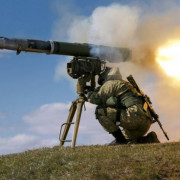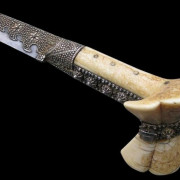Всемирное антидопинговое агентство
Содержание:
Therapeutic Use Exemptions
The purpose of the International Standard for Therapeutic Use Exemptions (ISTUE) is to establish:
- the conditions that must be satisfied in order for a Therapeutic Use Exemption (or TUE) to be granted, permitting the presence of a prohibited substance in an athlete’s sample or the athlete’s use or attempted use, possession and/or administration or attempted administration of a prohibited substance or prohibited method for therapeutic reasons;
- the responsibilities imposed on Anti-Doping Organizations in making and communicating TUE decisions;
- the process for an athlete to apply for a TUE;
- the process for an athlete to get a TUE granted by one Anti-Doping Organization recognized by another Anti-Doping Organization;
- the process for WADA to review TUE decisions; and
- the strict confidentiality provisions that apply to the TUE process
The current version of the ISTUE went into force on 1 January 2021.
Technical Documents
WADA publishes, from time to time, specific technical requirements, addressing particular operational areas of the accredited laboratories, in a Technical Document.
The Technical Documents constitute level-2 elements of the World Anti-Doping Program, and therefore implementation of the technical recommendations described in them is mandatory and must occur by the effective date specified in the Technical Document.
Technical Documents supersede any previous publication on a similar topic, or if applicable, the International Standard for Laboratories (ISL). The document in effect is the Technical Document whose effective date most recently precedes that of sample receipt date by the laboratory.
Technical Documents In Effect
|
Technical Document |
Summary of modifications |
Effective Date* |
|
1 Apr. 2021 |
||
|
1 Sep. 2014 |
||
| TD2021IDCR- Summary of modifications |
1 Apr. 2021 |
|
| TD2021EAAS- Summary of modifications |
1 Apr. 2021 |
|
|
1 Apr. 2021 |
||
| TD2021BAR — Summary of modifications |
1 Apr. 2021 |
|
| TD2021CG/LH- Summary of modifications |
1 Apr. 2021 |
|
| TD2021DL — Summary of modifications |
1 Apr. 2021 |
|
| TD2021GH- Summary of modifications |
1 Apr. 2021 |
|
|
1 Mar. 2019 |
||
|
1 Apr. 2021 |
||
|
15 May 2019 |
||
| TD2021NA — Summary of modifications |
1 Apr. 2021 |
* Deadline for implementation
RECENTLY APPROVED** VERSIONS OF TECHNICAL DOCUMENTS:
|
Technical Document |
Summary of modifications |
Approval Date |
Effective Date** |
|
21 Dec 2020 |
1 May 2021 |
||
|
21 Dec 2020 |
1 May 2021 |
** As per the International Standard for Laboratories, Technical Documents are posted on WADA’s website when approved by the WADA Executive Committee and may be applied prior to the effective date for implementation. The newly approved Technical Document replaces the previous effective version and becomes the mandatory version for all stakeholders by its effective date, which represents the deadline for its mandatory implementation.
TECHNICAL LETTERS
WADA publishes Technical letters on an ad-hoc basis in order to provide instruction and guidance to the Laboratories, WADA-Approved Laboratories for the ABP and other stakeholders on particular issues related to the analysis, interpretation and reporting of results for specific Prohibited Substance(s) and/or Prohibited Method(s) or on the application of specific Laboratory procedures. Technical Letters are modified and/or withdrawn by WADA as deemed appropriate.
The Technical Letters constitute a WADA Laboratory standard document which supersedes any previous publication on a similar topic and becomes an integral part of the International Standard for Laboratories (ISL), and therefore the described technical recommendations are mandatory and shall be implemented as soon as possible after approval by the WADA Executive Committee and publishing on WADA’s website.
A Technical Letter shall be applied to samples which are received by the Laboratory on and after the Technical Letter’s effective date.
TECHNICAL LETTERS IN EFFECT
|
Title |
Document Number |
Version Number |
Effective Date |
| Summary of Modifications for 2021 Technical Letters | |||
|
TL01 |
3.0 |
01 Jan 2021 |
|
|
TL02 |
3.0 |
01 Apr 2021 |
|
|
TL03 |
3.0 |
01 Jan 2021 |
|
|
TL04 |
3.0 | 01 Jan 2021 | |
|
TL05 |
3.0 | 01 Jan 2021 | |
|
TL06 |
3.0 | 01 Jan 2021 | |
|
TL07 |
3.0 | 01 Jan 2021 | |
|
TL08 |
3.0 |
01 Jan 2021 |
|
|
TL09 |
3.0 | 01 Jan 2021 | |
|
TL10 |
3.0 | 01 Jan 2021 | |
|
TL11 |
3.0 |
01 Apr 2021 |
|
|
TL12 |
3.0 | 01 Jan 2021 | |
|
TL13 |
3.0 | 01 Jan 2021 | |
|
TL14 |
3.0 | 01 Jan 2021 | |
|
TL15 |
3.0 | 01 Jan 2021 | |
|
TL16 |
3.0 | 01 Jan 2021 | |
|
TL17 |
3.0 | 01 Jan 2021 | |
|
TL18 |
2.0 |
01 Jan 2021 | |
|
TL19 |
3.0 | 01 Jan 2021 | |
|
TL20 |
2.0 |
01 Jan 2021 | |
|
TL21 |
2.0 |
01 Jan 2021 |
RECENTLY APPROVED* VERSIONS OF TECHNICAL letters:
|
Document number |
Version number |
Approval Date |
Effective Date** |
| Summary of Modifications for 2021 Technical Letters | |||
|
2.0 |
21 Dec 2020 |
1 May 2021 |
* As per the International Standard for Laboratories (ISL), Technical Letters are posted on WADA’s website following approval by the WADA Executive Committee. The newly approved Technical Letter replaces the previous effective version and becomes the mandatory version for all Signatories by its effective date, which represents the deadline for its mandatory implementation.
Americas
WADA Accredited Laboratory + Blood ABP
Havana, Cuba
Head of the Laboratory
Mr. Rodny Montes de Oca Porto
Director
Antidoping Laboratory Sports Medicine Institute
Calle 100 esquina a Aldabo. Boyeros
Ciudad de la Habana
10800
Cuba
Tel: (537) 643 76 49 / (537) 643 76 79
Fax: (537) 643 76 83
antidop.cuba@inder.gob.cu
*Laboratory operations may temporarily be disrupted due to COVID-19. Communication with the Laboratory is recommended for further updates.
Los Angeles, United States of America
Head of the Laboratory
Mr. Brian Ahrens
Director
UCLA Olympic Analytical Laboratory
2122 Granville Avenue
Los Angeles
California
90025
United States
Tel: (1.310) 825 2635
Fax: (1.310) 206 9077
BAhrens@mednet.ucla.edu
* Following temporary interruption of service due to Covid-19, the laboratory operations have resumed as of 13 July 2020.
WADA Accredited Laboratory + Blood ABP
Montreal, Canada
Head of the Laboratory
Prof. Christiane Ayotte
Director
INRS Centre Armand-Frappier Santé Biotechnologie
531, boulevard des Prairies
Laval
Quebec
H7V 1B7
Canada
Tel: (450) 686-5442
Fax: (450) 686-5614
christiane.ayotte@iaf.inrs.ca
* Following temporary interruption of service due to Covid-19, the laboratory operations have resumed as of 27 April 2020.
WADA Accredited Laboratory + Blood ABP
Rio de Janeiro, Brazil
Head of the Laboratory
Prof. Henrique Marcelo Gualberto Pereira
Director
Brazilian Doping Control Laboratory — LBCD
(Laboratório Brasileiro de Controle de Dopagem – LBCD – LADETEC / IQ — UFRJ)
Avenida Horácio Macedo, 1281, Polo de Química, bloco C
Cidade Universitária
Rio de Janeiro
21941-598
Brazil
Tel: 55 (21) 3938-3728
Fax: 55 (21) 3938-3700
henriquemarcelo@iq.ufrj.br
lbcd@iq.ufrj.br
*Following temporary interruption of service due to Covid-19, the laboratory’s operations have resumed.
WADA Accredited Laboratory + Blood ABP
Salt Lake City, United States of America
Head of the Laboratory
Dr. Daniel Eichner
President
The Sports Medicine Research and Testing Laboratory(SMRTL)
10644 South Jordan Gateway
Salt Lake City
Utah
84095
United States
Tel: (801) 994-9454 / (866) 404-6561
Fax: (801) 994-9455
de@smrtl.org
Laboratories
The International Standard for Laboratories (ISL) sets out the requirements to be followed by WADA-Accredited and WADA-Approved Laboratories for the Athlete Biological Passport (ABP) that wish to demonstrate that they are technically competent, operate within an effective Management System, and are able to produce forensically valid results. The ISL includes, inter alia, requirements for obtaining and maintaining WADA laboratory accreditation and WADA laboratory approval for the ABP, operating standards for the performance of Laboratories and WADA-Approved Laboratories for the ABP and a description of the accreditation and approval processes.
To complement the ISL, WADA also publishes specific technical requirements in a Technical Document or Technical Letter. WADA may also provide laboratories, WADA-Approved Laboratories for the ABP and other stakeholders with specific technical guidance and advice in the form of Laboratory Guidelines or Technical Notes.
The current version of the ISL went into force on 1 January 2021.
CODE COMPLIANCE BY SIGNATORIES
The Code makes WADA responsible for monitoring and enforcing compliance by Signatories with the Code and the International Standards. The Code also requires Signatories to report on their compliance to WADA. The purpose of the International Standard for Code Compliance by Signatories (ISCCS) is to ensure that strong, Code-compliant anti-doping rules and programs are applied and enforced consistently and effectively across all sports and all countries, so that clean athletes can have confidence that there is fair competition on a level playing field, and public confidence in the integrity of sport can be maintained. The ISCCS outlines:
- Code Signatories’ rights and responsibilities;
- the ways WADA supports Signatories in achieving, maintaining and, where applicable, regaining Code compliance; and
- a range of graded, predictable and proportionate sanctions for cases of non-compliance by Signatories; and, a process for determining non-compliance and consequences.
The current version of the ISCCS went into force on 1 January 2021.
Приписное свидетельство. Надо ли иметь его для учёбы?
Часто комиссия, принимающая документы для поступления в учебное заведение, требует от молодых мужчин предоставить ещё приписное свидетельство. Имейте в виду, что эти требования противоречат закону. Вы можете поступить на учёбу без этого документа. Но после поступления в заведение сертификат необходимо предъявить, так как его руководство должно отчитаться военкомату о количестве людей призывного возраста. Приписной сертификат также необходим для получения отсрочки от воинской службы.
Копия приписного свидетельства. Что это такое?
Мы уже выяснили, что представляет собой приписной сертификат. Очень часто возникают случаи, когда человек теряет его и не торопится его восстановить, а зря. Ведь иногда можно менять работу или учебное заведение. Во всех этих ситуациях документ потребуется снова.
Важно! Если вы потеряли свидетельство, то в течение двух недель нужно обратиться в военную комиссию для получения его копии.
Вам следует написать заявление, принести свои фотографии — и в течение короткого времени копия будет готова.
Не обращайтесь за изготовлением приписного свидетельства в другие сомнительные организации. Все они не имеют права выдавать такие документы. Остерегайтесь мошенничества.
Особые случаи при выдаче документа
Если перед получением свидетельства молодой человек переезжает на постоянное место жительства в другой регион, то он должен встать на учёт в военкомате в новом населённом пункте.
Если призывник прошёл медицинское обследование, но не получил документ, то нужно обратиться в военную комиссию с заявлением. Сертификат должны выдать.
Если у молодого человека есть сомнения, что про него забыли (нет повесток, его никто не ищет и не звонит), то лучше самостоятельно явиться в военкомат и тоже написать заявление. Про вас сразу же вспомнят.
Экологическая обстановка
За годы функционирования космодрома на территории Архангельской области он оказывал (и продолжает оказывать) определённое влияние на окружающую среду, застройкой объектов запуска и объектов обслуживания, инфраструктуры. Некоторое влияние оказывают ступени ракет, часто с остатками ядовитого топлива (несимметричный диметилгидразин), которые падают на близлежащие территории, заселённые людьми. На территории Архангельской области находится 11 «полей падения» — 6 районов падения отделяющихся частей ракет и 5 районов падения отделяемых частей межконтинентальных баллистических ракет: «Двинской», «Сия», «Пинега», «Койда», «Мосеево», «Бычье» и другие. В связи с уменьшением количества запусков происходит снижение нагрузки на районы падения. Район «Бычье» не задействовался с 1977 года, «Новая Земля» — с 1979 года, «Куприяново» — с 1981 года, «Двинской» — с 1998 года. Только районы «Койда» и «Мосеево» использовались для проведения пусков ракет космического назначения «Циклон». Остальные районы использовались под падение боковых блоков ракет-носителей «Союз», «Молния», «Союз-2». По состоянию на 2006 год на космодроме проводились пуски двух типов межконтинентальных баллистических ракет «Тополь» и «Тополь-М», для чего использовались 2 района падения: «Сия» и «Пинега». На территории Ненецкого автономного округа таких «полей падения» — 9 («Нарьян-Мар» и др.), в Республике Коми — 4: «Печора», «Усть-Цильма», «Железнодорожный», «Вашка».
В настоящее время на космодроме прекращены запуски ракет-носителей «Циклон-2/3» и «Космос-3М», а в основном производятся запуски различных модификаций РН «Союз», работающих на керосине и жидком кислороде и небольшое количество запусков РН «Рокот». В связи с этим объёмы возможных выбросов диметилгидразина и тетраоксида азота многократно уменьшились по сравнению с советским периодом.
В 2008 году были опубликованы параметры контракта на поиск и вывоз отработанных частей ракет-носителей, стартующих с космодрома Плесецк, из районов падения на территории Архангельской области и Республики Коми. Стоимость контракта на 2008 год составила 15 млн рублей (рост в 1,5 раза по сравнению с 2007 годом). В 2007 году было вывезено из районов падения более 148 тонн металлических фрагментов ракет.
Сразу после начала деятельности космодрома (1966 год) средний уровень смертности детей первого года жизни в сёлах, расположенных вблизи районов падения в Мезенском районе, становится выше и в течение двадцати лет превосходит в среднем в 2,1 раза уровень младенческой смертности в сёлах того же Мезенского района, удалённых от загрязнённых территорий. В начале 1990-х годов (после снижения количества пусков ракет) смертность вновь не отличается, при этом в сёлах риска отмечается общая тенденция к снижению смертности.
EDUCATION
The overall guiding purpose of the International Standard for Education (ISE) is to support the preservation of the spirit of sport as outlined in the Code and to help foster a clean sport environment.
The ISE has three (3) main objectives in support of this purpose.
The first objective is to establish mandatory standards which support Signatories in the planning, implementation, monitoring and evaluation of effective Education Programs as stipulated in Code Article 18. The Code, ISE and Guidelines for Education are aligned in such a manner that the Code outlines the framework for Education, the ISE sets out the principles and minimum standards that Education Programs shall include, while the Guidelines for Education aid Signatories to develop and improve their Education Program.
The second objective of the ISE is to provide:
- Definitions of terminology in the Education field.
- Clarity on roles and responsibilities for all Signatories responsible for planning, implementing, monitoring and evaluating Education Programs.
The third objective of the ISE is to help Signatories maximize the use of their resources by:
- Requiring Signatories to establish an Education Pool that shall at a minimum, include Athletes in the Registered Testing Pool and Athletes returning from a sanction.
- Encouraging Signatories to cooperate with others and coordinate their Education activities to minimize duplication.
- Encouraging Signatories to consider the benefits of educating a wider population through Values-Based Education programs to instill the spirit of sport and foster a clean sport environment.
- Encouraging Signatories to engage and leverage the resources and expertise of others, including governments, researchers and educational institutions.
The current version of the ISE went into force on 1 January 2021.
GUIDELINES
In cooperation with WADA, the International Anti-Doping Agreement (IADA) has also developed guidelines for Anti-Doping Organizations that have already obtained an ISO certification or that wish to be ISO-certified. These are: Guidelines for Transition and Guidelines for Certification.
As with all guidelines under the World Anti-Doping Program, these documents are subject to ongoing review and reassessment.
WADA encourages feedback on the content of the Guidelines, and recommends that stakeholders always consult this Web site for the latest version.
Laboratory Guidelines currently in force:
|
Laboratory Guideline |
Version number |
| Summary of Modifications for 2021 Laboratory Guidelines | |
| Human Growth Hormone (hGH) Biomarkers Test |
3.0 |
| TUE enquiries by Accredited Laboratories |
4.0 |
| Conducting and Reporting Subcontracted Analysis and Further Analysis for Doping Control |
3.0 |
|
Gene Doping Detection based on Polymerase Chain Reaction (PCR) |
1.0 |




